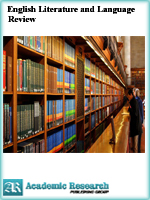English Literature and Language Review
Online ISSN: 2412-1703
Print ISSN: 2413-8827
Print ISSN: 2413-8827
Quarterly Published (4 Issues Per Year)

Archives
Volume 11 Number 1 March 2025
Evaluating the Chinese-English Translations in Duolingo
Authors: Clara Herlina Karjo ; Mei Rianto Chandra
Pages: 10-19
DOI: doi.org/10.32861/ellr.111.10.16
Abstract
Duolingo is a gamified language-learning app that mainly uses grammar translation method. The main weakness of Duolingo method is that Duolingo frequently offers only one acceptable translation, thus restricts the possibility of other variations. This study aims to evaluate the translation accuracy of Duolingo against the students’ translations. The participants for this study were 20 Chinese Department students and 15 English Department students at a private university in Jakarta. The materials for testing were a Chinese lesson about sports in Duolingo, which was played in real time in the classrooms. As the focus of this study is on translation, only the translation of full sentences from Chinese to English and from English to Chinese were taken as the data. The translation results were analysed qualitatively to find out the structural and semantic differences between the students’ and the Duolingo’s translations. The results showed that students’ translations are considered incorrect by Duolingo because of their inadequate knowledge of Chinese and English sentence structure and the word-by-word translation technique used. However, some alternative translations are unaccepted by Duolingo since they are not following the standard Duolingo translation. The results imply that Duolingo needs to cater for more variations instead of only accepting one variety as correct.
Gateway to Freedom: Space Writing and Identity Construction in the Underground Railroad
Authors: Lu Juan
Pages: 1-9
DOI: doi.org/10.32861/ellr.111.1.9
Abstract
Colson Whitehead’s The Underground Railroad, with its profound insights both into historical and current issues, has won several literary awards and accolades up to now. It tells a story of an enslaved black woman Cora, making her way to freedom from Georgia plantation through the underground railroad. By utilizing “the underground railroad” as a core spatial metaphor, the writer deliberately portrays the physical space combined with the power in the space confronted by the protagonist Cora, constructs the psychological space with resistance against racism and patriarchy and creates the “third space” with the interplay of the physical and psychological ones, which collaboratively show the protagonist Cora’s dynamic process of identity construction from marginalization, confusion and search for freedom in the end. Thus, this essay analyzes the active interaction between space and Cora’s identity to focus on the black spirits in the African community and explores the possibility of equality among different races.



